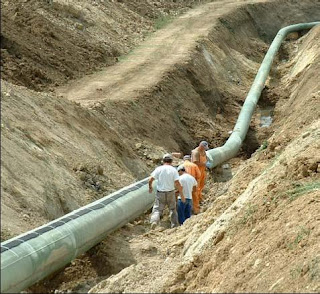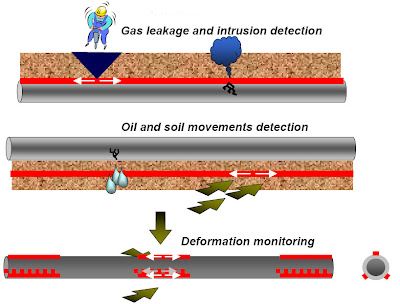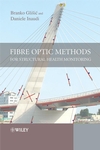 The recent pipeline conference in Rio de Janerio (Brazil), registered once again a big interest in the instrumentation of pipelines for structural monitoring and leakage detection.
The recent pipeline conference in Rio de Janerio (Brazil), registered once again a big interest in the instrumentation of pipelines for structural monitoring and leakage detection. The management of pipelines presents challenges that are quite unique. Their long length, high value, high risk and often difficult access conditions, require continuous monitoring and an optimization of the maintenance interventions. The main concern for pipeline owners comes from possible leakages that can have a severe impact on the environment and put the pipeline out of service for repair. Leakages can have different causes, including excessive deformations caused by earthquakes, landslides or collisions with ship anchors, corrosion, wear, material flaws or even intentional damaging.
Leakages can be detected and localized using distributed fiber optic temperature sensors. Fluid pipelines generate an hot-spot at the location of the leak, while gas pipelines generate a cold-spot due to the gas pressure relaxation.
These localized thermal anomalies can be detected by a distributed measurement with good spatial, time and temperature resolution. Typically, leakages of the order of 0.01 - 0.1% are detectable, one or two order of magnitude lower than conventional "mass-balance" techniques that compare the input and output from a pipeline to detect (but not accurately localize) leakages.
Furthermore, it is often possible to detect damage before a critical state is reached. Measuring distributed strain it is possible to determine the increased stresses due to external actions such as landslides and earthquakes or to internal causes such as a reduction of cross-section due to
corrosion and wear. Finally, distributed temperature and strain monitoring can detect third party intrusion before any damage is done to the pipeline.
Fiber optic distributed sensin g systems can be used for distributed measurements of both strain and temperature over extremely long distances, limiting the number of instruments that are necessary to monitor a long pipeline.
g systems can be used for distributed measurements of both strain and temperature over extremely long distances, limiting the number of instruments that are necessary to monitor a long pipeline.
Leakages can be detected and localized using distributed fiber optic temperature sensors. Fluid pipelines generate an hot-spot at the location of the leak, while gas pipelines generate a cold-spot due to the gas pressure relaxation.
These localized thermal anomalies can be detected by a distributed measurement with good spatial, time and temperature resolution. Typically, leakages of the order of 0.01 - 0.1% are detectable, one or two order of magnitude lower than conventional "mass-balance" techniques that compare the input and output from a pipeline to detect (but not accurately localize) leakages.
Furthermore, it is often possible to detect damage before a critical state is reached. Measuring distributed strain it is possible to determine the increased stresses due to external actions such as landslides and earthquakes or to internal causes such as a reduction of cross-section due to
corrosion and wear. Finally, distributed temperature and strain monitoring can detect third party intrusion before any damage is done to the pipeline.
Fiber optic distributed sensin
 g systems can be used for distributed measurements of both strain and temperature over extremely long distances, limiting the number of instruments that are necessary to monitor a long pipeline.
g systems can be used for distributed measurements of both strain and temperature over extremely long distances, limiting the number of instruments that are necessary to monitor a long pipeline.A couple references on this topic:
- Paper: "Long-Range Pipeline Monitoring By Distributed Fiber Optic Sensing", D. Inaudi, B. Glisic,6th International Pipeline Conference September 25 - 29, 2006, Calgary, Alberta, Canada'(2006)
- SMARTEC Application note on pipeline monitoring
- Press release on leakage detection tests
I will report on the presentations at the Rio Pipeline Conference in another post.




No comments:
Post a Comment